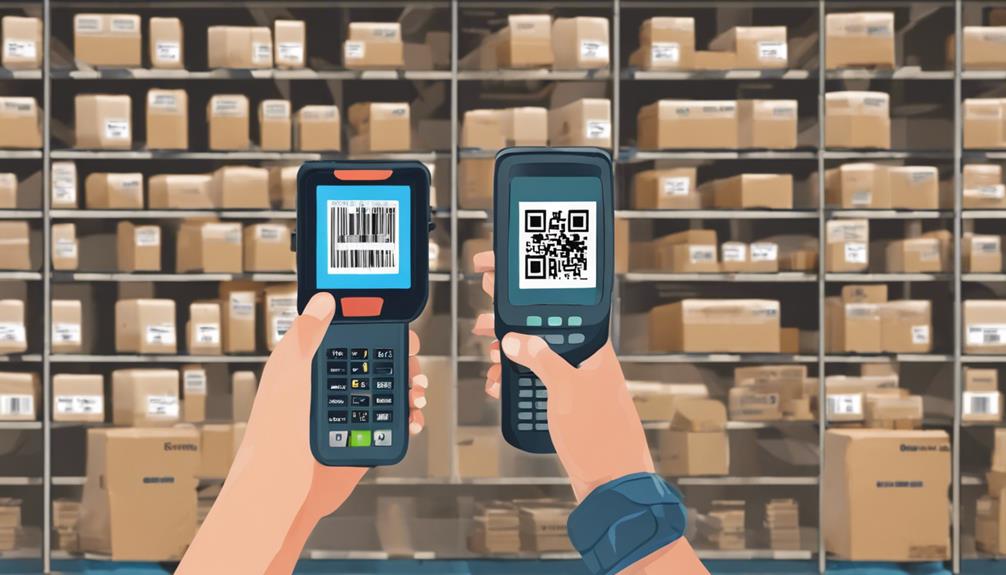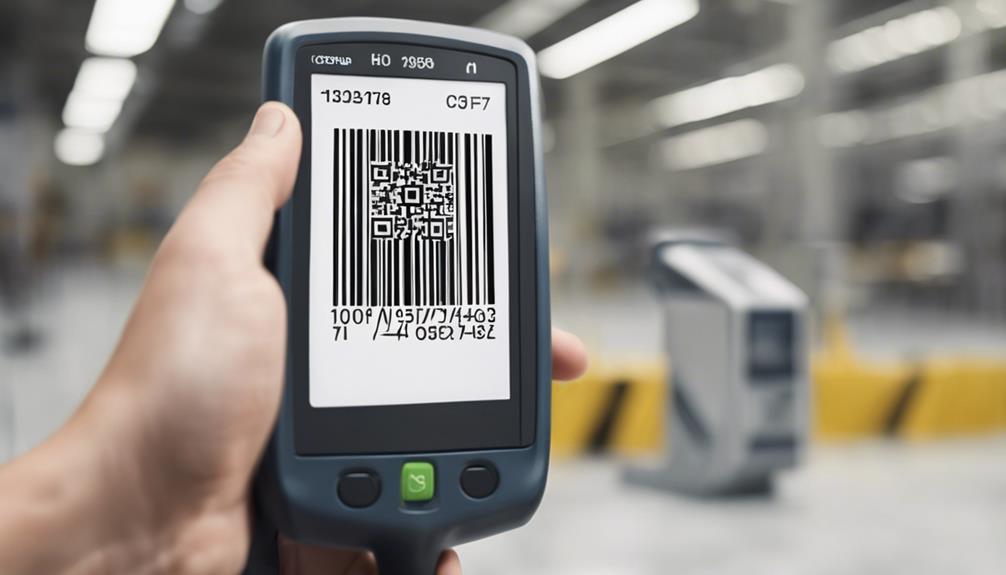As you consider the evolution of barcode indexing, ponder the journey from its humble beginnings to the sophisticated systems of today. The advancements made in the past have laid a robust foundation, but what lies ahead in the future may reshape the landscape entirely. With emerging technologies on the horizon, the possibilities seem endless, offering a glimpse into a realm where efficiency and innovation converge. The progression through the five stages of barcode indexing hints at a transformative path, inviting exploration into the untapped potential awaiting in the realm of barcode indexing.
History of Barcode Indexing
The history of barcode indexing dates back to the early 20th century when the need for efficient inventory management became apparent in various industries. Technological advancements played a crucial role in the development of barcode indexing systems, revolutionizing industrial applications worldwide. The global adoption of barcode indexing stemmed from the efficiency benefits it offered, allowing organizations to streamline operations, reduce errors, and enhance productivity.
In the early stages, barcode indexing systems were limited by technology, utilizing simple linear barcodes to encode information. However, with advancements in scanning technology and data processing capabilities, more complex barcode systems were introduced, enabling greater data storage and retrieval capacities. These improvements paved the way for barcode indexing to become a cornerstone of modern inventory management practices.
The evolution of barcode indexing has been marked by continuous innovation, driven by the increasing demand for accuracy and efficiency in a wide range of industries. From retail to healthcare, barcode indexing has become an indispensable tool for organizations seeking to optimize their operations and stay competitive in today’s fast-paced business environment.
Evolution of Techniques
Throughout the evolution of barcode indexing, various techniques have emerged to enhance the efficiency and capabilities of these systems.
- Emerging technologies: The integration of advanced technologies like machine learning and artificial intelligence has revolutionized barcode indexing. These technologies enable automatic recognition and decoding of barcodes, significantly speeding up the indexing process.
- Data accuracy improvements: Techniques such as error correction algorithms and redundancy checks have been implemented to ensure the accuracy of indexed data. These methods help in mitigating errors that may occur during barcode scanning or decoding, thereby enhancing the overall data quality.
- Enhanced connectivity: The evolution of techniques has also led to improved connectivity between barcode scanners and databases. Real-time syncing capabilities and cloud integration allow for instant updates and access to indexed information from anywhere, increasing the system’s efficiency and usability.
These advancements in barcode indexing techniques have not only improved operational efficiency but have also contributed to higher levels of data accuracy in various industries.
Current State Analysis
Analyzing the current state of barcode indexing reveals a landscape shaped by rapid technological advancements and a relentless pursuit of efficiency. Efficiency improvements in barcode indexing have been significant, with automated systems streamlining processes and reducing human error. Data accuracy is paramount in the current state of barcode indexing, as any inaccuracies can lead to costly mistakes in inventory management or shipping processes.
Technological innovations such as machine learning algorithms and AI-powered systems have greatly enhanced the accuracy of barcode indexing by minimizing manual intervention and improving error detection capabilities. These advancements have revolutionized the efficiency of barcode indexing, enabling faster data retrieval and processing times.
Future Trends
Amidst the ever-evolving landscape of barcode indexing, a discernible shift towards integrating blockchain technology is becoming increasingly prevalent. This shift is set to revolutionize the way data is stored, accessed, and secured within barcode systems. The future trends in barcode indexing are poised to be heavily influenced by the integration of predictive analytics and machine learning technologies.
Future Trends in Barcode Indexing:
- Blockchain Integration: Leveraging blockchain technology for enhanced data security and transparency.
- Predictive Analytics: Utilizing data insights to anticipate trends and optimize inventory management.
- Machine Learning: Implementing algorithms to automate data processing and improve accuracy in barcode scanning.
These upcoming advancements signify a pivotal transformation in the field of barcode indexing, promising more efficient operations and streamlined processes. By embracing these future trends, businesses can stay ahead of the curve and unlock new opportunities for growth and innovation.
Technological Impact
The integration of blockchain technology in barcode indexing is not just a mere adaptation; it signifies a significant technological impact that is reshaping the very foundation of data management and security. Blockchain’s decentralized and tamper-proof nature enhances automation efficiency by streamlining processes and reducing the need for manual interventions in barcode indexing. This results in quicker data retrieval and updates, ultimately improving overall operational efficiency.
Moreover, blockchain technology ensures unparalleled data accuracy by creating a transparent and immutable record of each barcode transaction or update. This heightened accuracy eliminates errors caused by manual entry or manipulation, leading to a more reliable database for businesses and organizations.
Frequently Asked Questions
How Do Barcode Indexing Systems Handle Data Privacy and Security?
When it comes to data privacy and security in barcode indexing systems, encryption is key. Access control measures ensure only authorized personnel can view sensitive information. By implementing these safeguards, your data remains protected from unauthorized access and breaches.
What Are the Potential Environmental Impacts of Barcode Indexing?
When considering environmental sustainability, barcode indexing systems play a crucial role in waste reduction by optimizing inventory management and resource allocation. By efficiently tracking products, they minimize excess production, transportation, and storage, contributing to a greener operational framework.
Can Barcode Indexing Be Used in Healthcare for Patient Records?
Barcode indexing can be utilized in healthcare for patient records, improving efficiency and enhancing accuracy. By implementing this system, medical facilities can streamline record-keeping processes, reduce errors, and ensure quick access to vital patient information.
Are There Any Ethical Considerations Regarding Barcode Indexing?
When considering barcode indexing, you must address privacy concerns to safeguard patient data. Ensuring data accuracy is crucial to maintaining ethical standards. By implementing strict protocols and encryption measures, healthcare institutions can navigate these ethical considerations effectively.
How Does Barcode Indexing Affect Job Opportunities in the Market?
Barcode indexing significantly impacts job opportunities by fueling job growth in response to market demand. It creates a need for skilled professionals proficient in data management and information technology. This dynamic industry offers diverse career paths.



